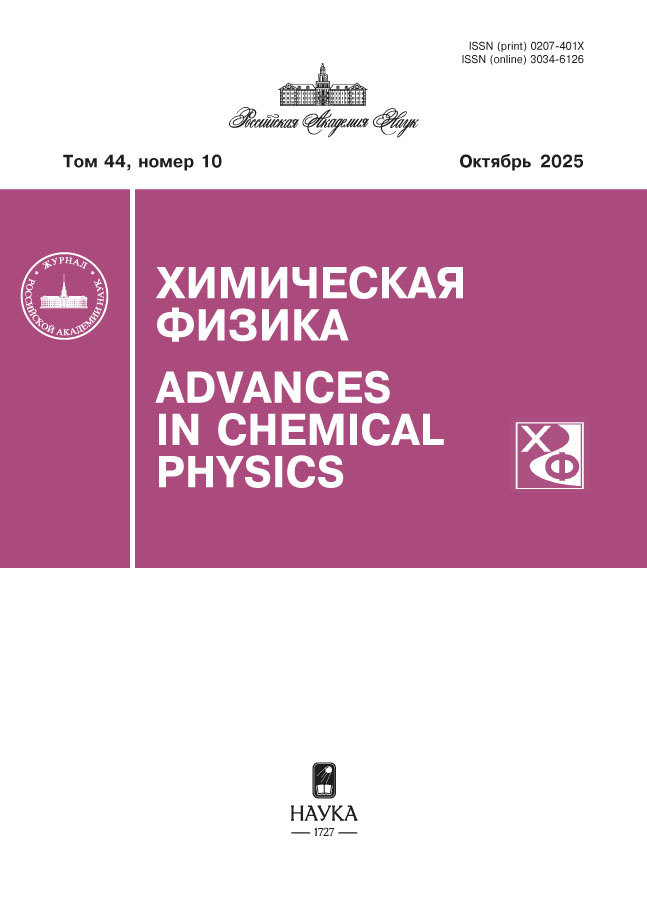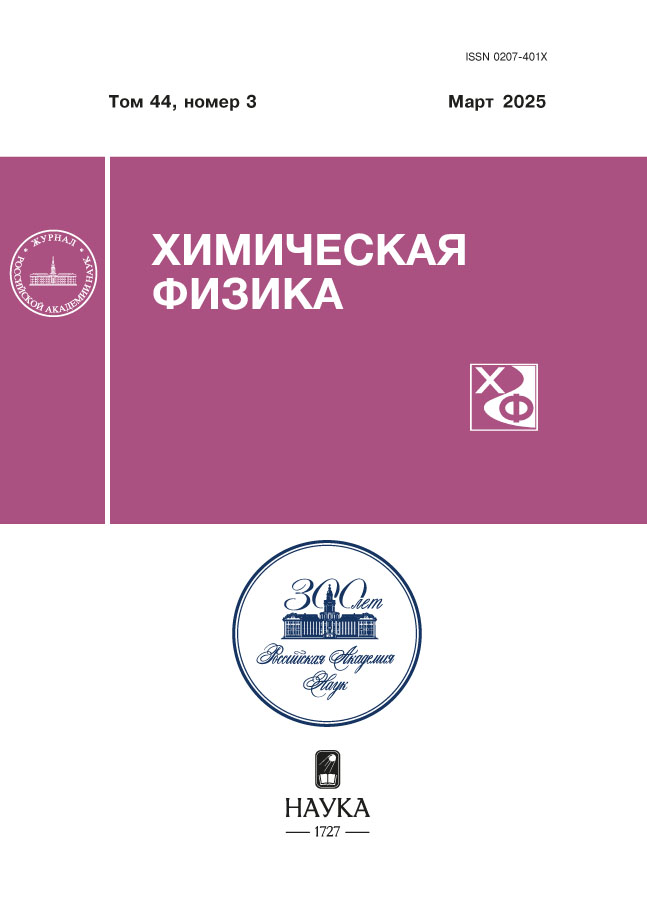Кинетика и механизм разложения дибензоилфуроксана
- Авторы: Назин Г.М.1, Казаков А.И.1, Набатова А.В.1, Шилов Г.В.1, Ферштат Л.Л.2, Ларин А.А.2
-
Учреждения:
- Федеральный исследовательский центр проблем химической физики и медицинской химии Российской академии наук
- Институт органической химии им. Н.Д. Зелинского Российской академии наук
- Выпуск: Том 44, № 3 (2025)
- Страницы: 28-36
- Раздел: Кинетика и механизм химических реакций, катализ
- URL: https://cijournal.ru/0207-401X/article/view/679466
- DOI: https://doi.org/10.31857/S0207401X25030036
- ID: 679466
Цитировать
Полный текст
Аннотация
Калориметрическим методом изучена кинетика разложения дибензоилфуроксана (ДБФО) в расплаве и в разбавленных растворах в дифениле и нитробензоле при температурах 116–141 °С. В результате разложения ДБФО образуется вещество, которое по своей природе тоже является фуроксаном, но отличается более сложным строением и более высокой температурой разложения. Высокая скорость и необычный состав продуктов распада ДБФО объяснены в рамках бирадикального механизма разложения фуроксанов.
Ключевые слова
Полный текст
Об авторах
Г. М. Назин
Федеральный исследовательский центр проблем химической физики и медицинской химии Российской академии наук
Email: akazakov@icp.ac.ru
Россия, Черноголовка
А. И. Казаков
Федеральный исследовательский центр проблем химической физики и медицинской химии Российской академии наук
Автор, ответственный за переписку.
Email: akazakov@icp.ac.ru
Россия, Черноголовка
А. В. Набатова
Федеральный исследовательский центр проблем химической физики и медицинской химии Российской академии наук
Email: akazakov@icp.ac.ru
Россия, Черноголовка
Г. В. Шилов
Федеральный исследовательский центр проблем химической физики и медицинской химии Российской академии наук
Email: akazakov@icp.ac.ru
Россия, Черноголовка
Л. Л. Ферштат
Институт органической химии им. Н.Д. Зелинского Российской академии наук
Email: akazakov@icp.ac.ru
Россия, Москва
А. А. Ларин
Институт органической химии им. Н.Д. Зелинского Российской академии наук
Email: akazakov@icp.ac.ru
Россия, Москва
Список литературы
- Прокудин В.Г., Назин Г.М., Манелис Г.Б. // ДАН СССР. 1980. Т. 255. № 4. С. 917.
- Назин Г.М., Казаков А.И., Набатова Л.Л., Ферштат Л.Л., Ларин А.А. // Хим. физика. 2024. Т. 43. № 4. С. 37.
- Казаков А.И., Лемперт Д.Б., Набатова А.В. и др. // Хим. физика. 2023. Т. 42. № 5. С. 3. https://doi.org/10.31857/S0207401X23050047
- Казаков А.И., Лемперт Д.Б., Набатова А.В. и др. // Хим. физика. 2023. Т. 42. № 9. С. 3. https://doi.org/10.31857/S0207401X23090030
- Казаков А.И., Лемперт Д.Б., Набатова А.В. и др. // Хим. физика. 2024. Т. 43. № 3. С. 46.
- Казаков А.И., Лемперт Д.Б., Набатова А.В. и др. // Хим. физика. 2024. Т. 43. № 4. С. 29.
- Brittelli D.R., Boswell G.A., Jr. // J. Org. Chem. 1981. V. 46. P. 316. https://doi.org/10.1021/jo00315a018
- Barbaro G., Battaglis A., Dondoni A. // J. Chem. Soc. B. 1970. P. 588. https://doi.org/10.1039/J29700000588
- Snyder H.R., Boyer N.E. // J. Amer. Chem. Soc. 1955. V. 77. P. 4233. https://doi.org/10.1021/ja01621a021
- Гальперин Л.Н., Колесов Ю.Р., Машкинов Л.Б., Тернер Ю.Э. // Тр. шестой Всесоюз. конф. по калориметрии. Тбилиси: Мецниереба, 1973. С. 539.
- Бенсон С. Термохимическя кинетика. М.: Мир, 1971.
- Mellini M., Merlino S. // Acta Cryst. 1976. V. B32. P. 1079. https://doi.org/10.1107/S0567740876004706
Дополнительные файлы


















